The Wars of the Roses: King Edward IV of England
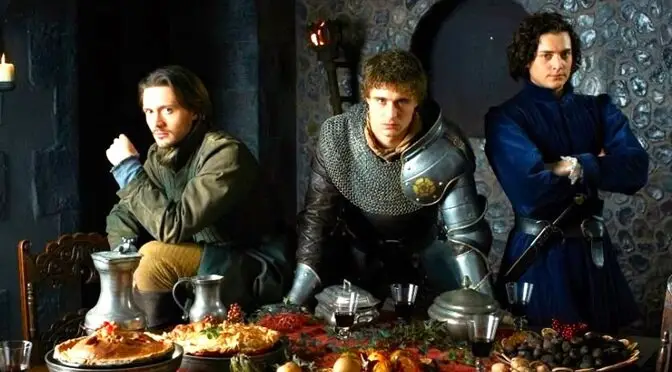
Edward IV and his two brothers: George, Duke of Clarence (left) and Richard, Duke of Gloucester (future King Richard III) on the right. Still from the series “The White Queen”
And having unexpectedly paid off an old debt,
I will deceive all bad expectations,
Showing people your bright image;
And, like a bright stone in a dark rock,
My new face, shining above the sinful darkness,
Greatness will attract more eyes,
What is not foil-enhanced valor.
I will turn evil into my own good
And, to everyone’s surprise, I will redeem the past.
William Shakespeare "Henry IV"
act I, scene II;
translation by E. Birukova
History in faces. The last character in our series dedicated to the participants in the War of the Scarlet and White Roses was the feeble-minded King Henry IV. Today we continue this topic, and the hero of our next material will be the English king, who belonged to the York Plantageneg line, Edward, Earl of March, better known as King Edward IV. While still a child, he watched as his father, Duke Richard, fought with King Henry VI, who belonged to the House of Lancaster, for the throne of England. And he was already close to the goal, but was defeated at the Battle of Wakefield in 1461 and was killed in this battle.
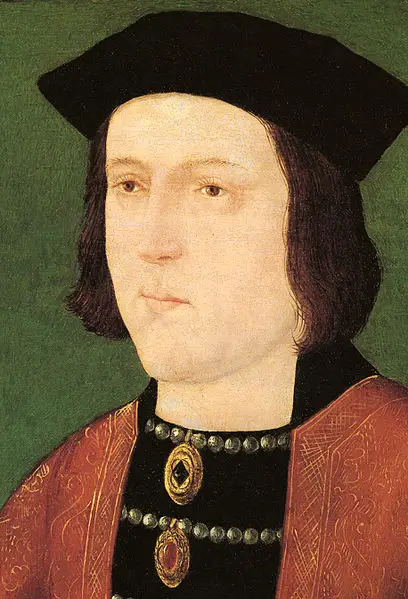
Portrait of Edward IV. Unknown artist. National Portrait Gallery, London
However, Edward inherited his rights and became the Duke of York, and therefore the next (and quite legitimate!) contender for the throne, even if the king was alive and well.
He, in turn, moved his troops to London, and then fate smiled on him: on February 1, at the Battle of Mortimer Cross, he defeated the Lancastrians, and in March he proclaimed himself king of England.
His two brothers, George and Richard, supported him in everything, accompanied him on campaigns and took part in battles. However, he could achieve final victory over the enemy only by defeating the army of Queen Margaret, who was in the north of the country. This was supposed to be the “last and decisive battle” to which Edward went, joining his forces with the armies of his followers - the Earl of Warwick and Norfolk.
A fierce battle, which lasted all night and all day, took place on March 28 at Towton, near York. The number of killed exceeded 30 thousand on both sides. But all these sacrifices were worth it, because, having returned to London, on April 29 he was solemnly crowned in Westminster Abbey. He gave his brother George the title of Duke of Clarence, and Richard (who would later become known as King Richard III) the Duke of Gloucester.

Elizabeth Woodville presents Edward IV with a petition for the return of lands and titles to her children. James William Edmund Doyle (1864) "Edward IV" in Chronicles of England: 55-1485 London: Green, Longman, Roberts and Green, p. 412. British Library, London
His subjects really liked the new king, because he was young, handsome, kind, and showed himself to be a brave warrior and a decisive ruler. Even too decisive, because Edward’s reign began with terrible cruelties, self-will and murders, carried out according to the principle “everything is for friends, revenge for enemies!”
All three previous reigns were declared usurpations, all decisions that were adopted then were invalid and deprived of legal force. Also, all awards that were distributed by the Lancasters were required to be returned to the treasury. Only court sentences and titles of nobility granted at that time were considered valid.
Parliament made a decision according to which almost all the families who provided services to the Lancastrians during the reign of Henry IV were declared traitors, and King Henry VI, his wife Margaret, their son Edward, the Dukes of Somerset and Exeter, and many earls, lords and knights were declared criminals and were subject to the death penalty. Naturally, their estates were confiscated to the treasury and then transferred to the favorites of the new government.
As a result, the number of confiscated fiefs under Edward turned out to be so large that Edward IV, despite all his enormous expenses, did not introduce new taxes. So it is not surprising that the common people fell in love with the new king, because from his reign he did not lose anything financially, but only gained. Because from all this redistribution of wealth he also received a considerable share.
Everyone was busy: the gunsmiths were forging weapon, spinners spun, weavers weaved, game was needed for feasts... That is, under Edward, it was easier for the ordinary people of England to make money, although, of course, their work itself was always hard.
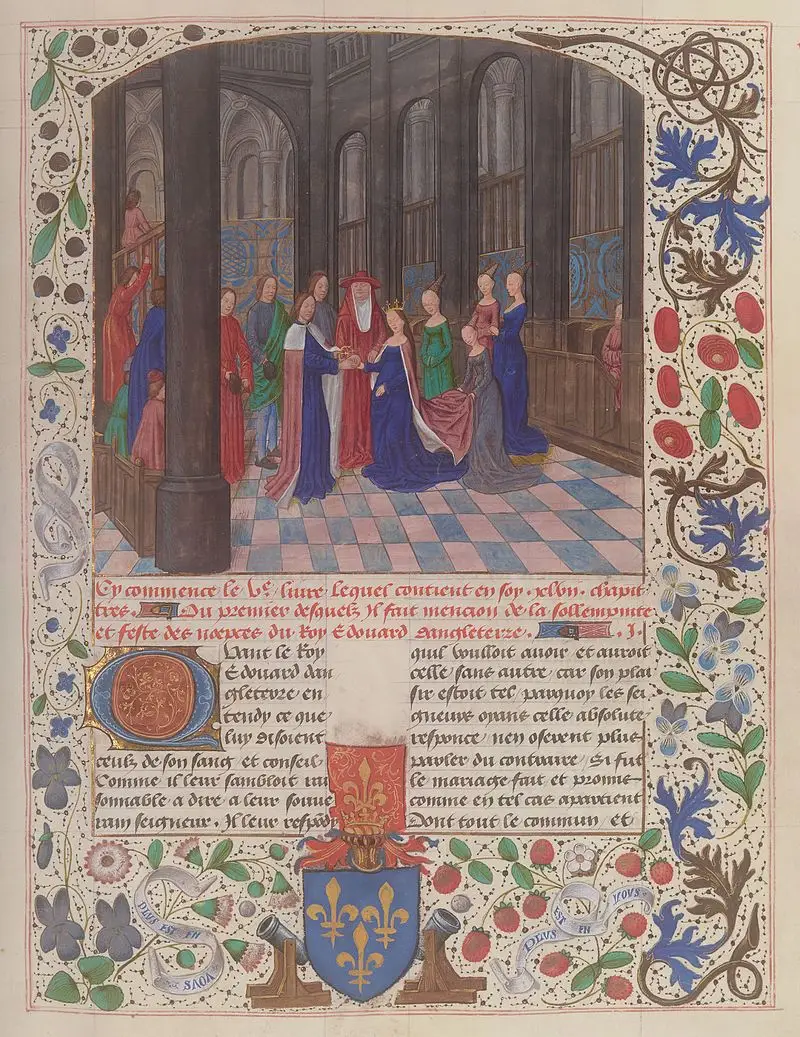
Marriage of Edward IV to Elizabeth Woodville. "The Old Chronicles of England" by Jean de Wavrine. National Library of France, Paris
On top of everything else, the king was also friendly in his manner, knew how to please people, so he enjoyed the love of the people, especially since the country was in a flourishing state under him.
And at first glance, precisely because of all this, his position on the throne was very strong. But this impression was deceptive, because the Lancastrian supporters did not lay down their weapons. And the king also made a serious mistake by quarreling with the Earl of Warwick, who had been helping him all this time and expected to continue to be the king’s closest person. The split between recent comrades began with the unexpected marriage of the king.
The fact is that the young king was extremely partial to the female sex and managed to seduce many noble girls and young women. But no one expected that he would be able to love someone seriously...
And he fell in love, however, not with anyone, but with the daughter of the Duchess of Bedford, Elizabeth, a young widow whose husband, Sir John Gray, was a supporter of the Lancastrians and fell in the battle of St. Albans. Naturally, all his estates were immediately confiscated. But Elizabeth was not afraid to fall at the king’s feet and began to beg him to return these lands to her little children. And Edward not only fulfilled her request, but also began to look after Elizabeth, and, of course, invited her to sleep with him. And, probably, everything would have been different later if she had agreed.
But the beautiful widow (and everyone noted her natural beauty!) answered the king that she would never humiliate herself with such a love affair. Then Edward offered her a legal marriage, although he set the condition that their union would be kept secret for some time. Elizabeth agreed to this, and then some priest in the spring of 1464, in the presence of the Duchess of Bedford and several ladies, married them. But it was only in September that Elizabeth was presented as queen to the assembly of lords, and the next year she was solemnly crowned.
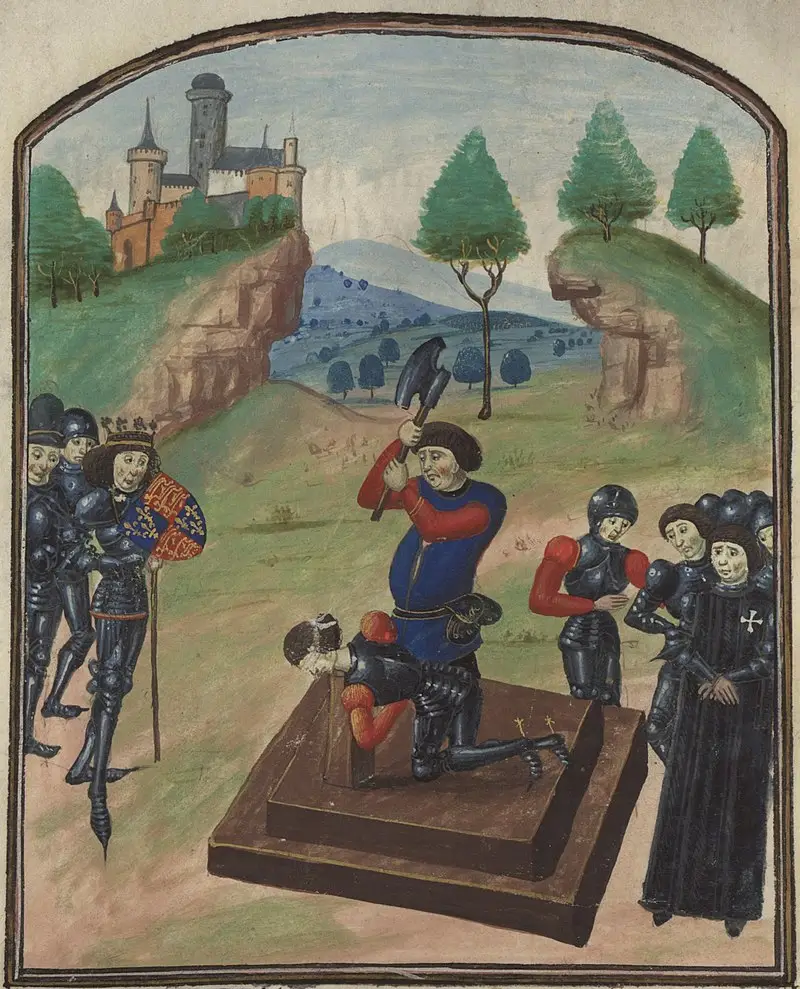
The execution of Edmund Beaufort, 4th Duke of Somerset in 1471 at Tewkesbury, overseen by Edward IV. Illuminated miniature from The History of the Victorious Return of King Edward IV to His Kingdom of England. University Library in Ghent
Edward generously benefited all of his wife's numerous relatives (which, of course, aroused the envy of all the other courtiers!) and began to take less account of the Earl of Warwick. Perhaps he was simply tired of his claims to friendship with him and the role of adviser.
But then it got even worse.
In 1467, the king sent Warwick as an ambassador to France to negotiate an alliance with Louis XI, and in the meantime, without even informing him, he entered into an agreement with the Duke of Burgundy, the worst enemy of the French king. The next year, he gave his sister Margarita as a wife to Charles the Bold, thus concluding a typical dynastic marriage.
Warwick was very offended and angry by all this, and he decided to take revenge on the king, who had forgotten his benefactor. To do this, he attracted to his side his son-in-law, the Duke of Clarence, married to his daughter Isabella, and he, being the heir to the throne, fell for his bait and began to intrigue against Edward.
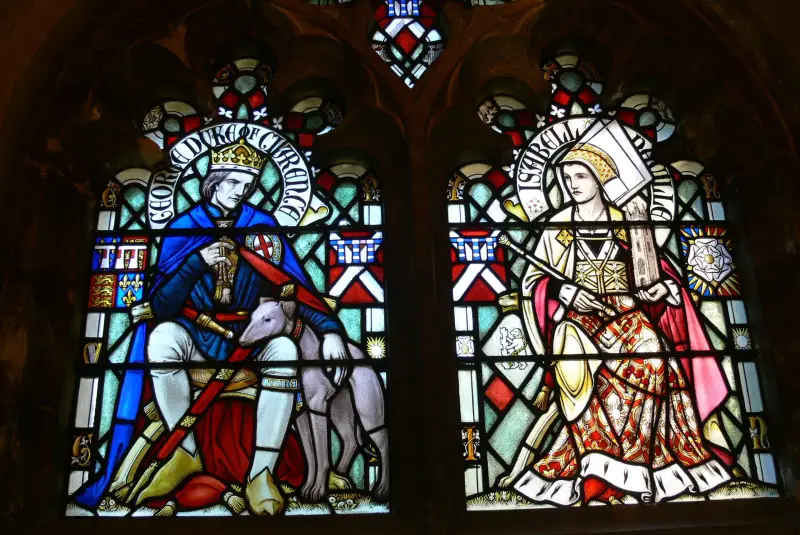
Stained glass windows of the hall at Cardiff Castle. They depict George, Duke of Clarence, and his wife Isabella Neville. Cardiff Castle, Wales
It all ended with the uprising of the Scarlet Rose supporters in Lincoln County in 1470. Edward defeated the rebels, captured their leader Wales, and from him he learned that Warwick and Clarence were behind all this.
Realizing that they were in trouble, both fled to the north of the country, but Edward followed them. With great difficulty, the rebels reached Sotempton, boarded a boat there and crossed the Canal to Calais, and from there to Louis XI, who received them and promised patronage and protection. He also reconciled Warwick with Queen Margaret, and it was agreed that the earl would do everything possible to return the throne to Henry VI.
When the rebels moved back to England in September, many members of the nobility who had been offended by Edward supported them. And Edward himself turned out to be so careless that he was feasting in one of the castles near Doncaster when the rebel cavalry appeared under its walls.
The king miraculously managed to escape to Holland, literally in “only his shirt,” but Charles of Burgundy not only received the deposed king with all kinds of honors, but provided him with substantial financial assistance. And he was able to hire soldiers and ships with this money, and already in March 1471 he went back to England to win his throne, and the population supported him! Very soon he already had an army of 60 thousand people and was able to move with it to London.
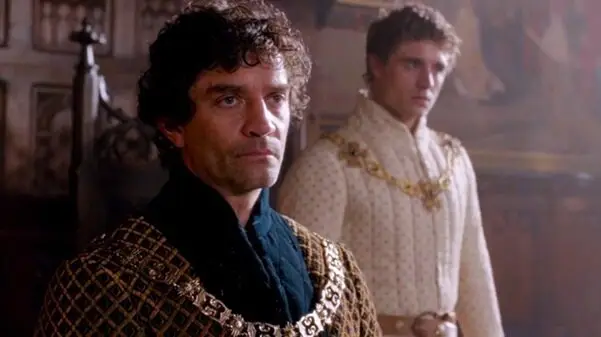
Earl of Warwick "Kingmaker" and Edward IV. Still from the series “The White Queen”
Warwick and his army met him near Coventry. The battle began, and he had a chance of victory, but then Edward’s brother, the Duke of Clarence, came to his senses, remembered “brotherly love” and with most of his army went over to his side, betraying Warwick.
After this, Edward entered London unhindered and continued to reign there, although Warwick was still completely unbroken. This happened on April 14 at the Battle of Barnet, known as the “Battle in the Fog.” Both Edward and his brother Richard fought with great courage, setting an example for their soldiers. It all ended with the defeat of Warwick, and he and his brother Montagu were killed.
But then Queen Margaret, in turn, landed in England and moved against Edward, although she was late. And it all ended with the fact that on May 4 he defeated her army at the Battle of Tewksbury. Margaret and her son Edward of Westminster were taken prisoner. The young man, who was dangerous with his rights to the throne, was immediately killed, and then his father, the crazy Henry VI, was also killed in the Tower.

Death of Edward of Westminster, Prince of Wales, after the Battle of Tewkesbury. Edward IV's brothers, Richard (to the king's right) and George (to his left), stand with Lord Hastings next to the king. James William Edmund Doyle (1864) "Edward IV" in Chronicles of England: 55 - 1485 London: Green, Longman, Roberts and Green, p. 424. British Library, London
Only now, having committed all these atrocities, could Edward reign in peace. But then the Duke of Clarence, who clearly lacked intelligence despite all his personal courage, once again began to weave intrigues against him. Moreover, he couldn’t think of anything better than accusing his beloved wife Elizabeth Woodville of witchcraft. That she allegedly killed his wife with her witchcraft, who died in childbirth, which was a completely common thing at that time.
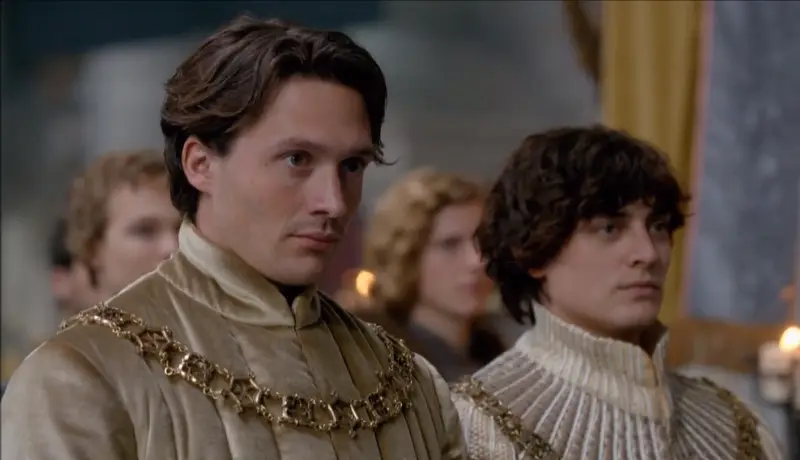
George and Richard are two brothers of the pretender to the throne of England. Still from the series “The White Queen”
Not only to discredit the queen, he seized one of her maids, accused her of witchcraft and had her executed by hanging. The queen did not have time to save the girl, but immediately struck him back: she ordered the capture of one of the Duke of Clarence’s friends, accused him of witchcraft and ordered him to be tortured. Naturally, under torture, both he and his accomplices admitted that, at the instigation of the Duke of Clarence, they had plotted against the king. The only punishment for such an atrocity could be the death penalty!
The Duke himself managed to get away with it, but, as they say, he bit the bit and began to spread rumors that his older brother was the king... illegitimate, his marriage with Elizabeth had no legal force. At this point the king could not stand it and ordered the unlucky brother to be arrested and tried for treason.
At a session of parliament in January 1478, he reminded George of all his past sins: organizing an uprising in the north, helping Warwick, participating in a conspiracy of sorcerers who were plotting against the royal person, and in preparing, together with Margaret of Anjou, to overthrow Edward from the throne. Both his brother Richard, Duke of Gloucester, and the Queen Mother, Cecilia Neville, and his sister Margaret, who by this time had become the Dowager Duchess of Burgundy, asked the king to spare George. However, Edward was deaf to their pleas.
As a result, the Duke was declared guilty of high treason and executed (albeit not in public!) by drowning in a barrel of malvasia - a wine that, as they say, Elizabeth Woodville loved very much.
There is an opinion that the Duke was asked to choose the type of execution himself, and he chose such an exotic death only in order to take revenge, at least in this way, on Elizabeth, whom he hated. Although, there is no exact information about his death on February 18, 1478. He died and that's it.
An attincture was imposed on all of George's children, that is, they were deprived of all rights and all titles, and in the future they could no longer receive them. In other words, both of his sons and two daughters, with one stroke of the pen, were deprived of all rights to the throne, not only for themselves, but also for their children. Later, Richard Gloucester did not hide that this was the revenge of the Woodville family, who thus took revenge on him for the execution of Richard Woodville, Earl Rivers and John Woodville in 1469. However, the Duke himself should have also been smarter and not loosened his tongue where he could have remained silent.
Having dealt with everyone who could at least somehow annoy him, Edward began building cathedrals, put the finances of the state in order, and encouraged the development of trade, education and art. Moreover, he traded himself, and so successfully that he became even richer.
He spent the last years of his life enjoying peace, drunkenness and debauchery. He continued to love Elizabeth, but did not miss the young ladies-in-waiting, who willingly indulged his base passions.
As a result, his excessive gluttony (being slender in his youth, he became very fat during these years) and depraved lifestyle quickly undermined his health and led to his grave. He died after living only 41 years, but left behind a kingdom that was prosperous in all respects.
Information